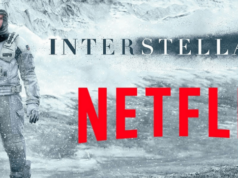These days, with so many streaming services vying for your attention and money, it’s easy to feel like a kid in a candy store. However, you may wonder which one is right for you. From consumer to producer, the ever changing landscape of how content is consumed has baffled everyone. Traditional media advocates persist because many people are unwilling to give up their old habits.
On the flip side, emerging evidence indicates a remarkable rise in video streaming service popularity. Services like BritBox, BBC iPlayer, and ITV have gained an immense loyal fan base in the past few years, within the UK. You can also access ITV outside the UK and that too for free.
Keeping this in mind, we’re going to look at some of the pros and cons of video streaming services versus traditional TV in the UK.
PROs
Content availability at all times
Video on demand, sometimes known as “television on demand,” allows viewers to watch their favorite shows whenever they like. Unlike with regular TV networks, there is no set schedule to adhere to in order to watch shows.
You may also easily rewatch your favorite episodes, pause and return to shows, or watch many episodes in a row if you need to. For example, Disney Plus is a powerful tool for reaching people in the UK. The streaming service will be the sole location to watch many of the spin-off shows from the Star Wars, Pixar, Disney, and Marvel universes.
No Ads
Streaming services have the ability to keep your viewing experience ad-free as opposed to traditional tv which see’s a ton load of commercials. So in essence, you pay a lot more for traditional television, yet the advertising takes up to a third of your viewing time. ITVX, one of the UK’s top streaming services, offers ad-free plans at a very nominal cost.
It largely serves as the hub for ITV’s on-demand and catch-up programming, while it also has a subscription component that includes BritBox as well. It costs only £5.99/month or £59.99/year. Offline playback (through downloads) and catch-up streaming (without commercials) are also part of the subscription.
Price Point: More Affordable
The economic cloud hovering over the heads of the audience members is real. A recent survey indicated that as a result of macroeconomic pressures, viewers are rethinking the value of their current TV subscription. Although NOW is widely used in the UK, it comes at a hefty price. Amazon Prime Video, on the other hand, is one of the greatest value streaming options for people on a tighter budget. While the service’s original programming is always popular, subscribers may also access thousands of movies and TV episodes for purchase or rental.
Additional Perks and Benefits
To truly capture the audience’s attention, streaming platforms are adding a little more than just your favorite content. Prime Video from Amazon comes with other Amazon benefits, such as unlimited one-day delivery on anything ordered from the Amazon store, which is one of the main features that sets it apart from Netflix. This is a great reward for those who regularly shop at Amazon. Amazon also allows its customers to rent or buy movies and TV series that aren’t included in a subscription, which is a major benefit over Netflix.
Now let’s take a look at some of the cons of video streaming services compared to traditional TV in the UK.
CONs
Regionally Restricted Content
Most of the streaming platforms deploy firewalls and geo-blocks to restrict users outside a specified region from accessing the content library. This, we believe, is a sneaky ploy to get viewers to subscribe to the service first and then view the content specific to THEIR region only. Moreover, some of the services are ONLY available in select regions, such as ITV in the UK. This might feel unfair to viewers who live in, for example, Pakistan and wish to view ITVX and its stellar content. So with streaming services, the content is typically chosen based on where the user is located.
The Need To Subscribe to Multiple Platforms
Depending on who you choose for your on-demand service, they may or may not have everything you’re looking for. As a result, many service providers tailor their offerings to appeal to the largest possible audience. Even if the shows were popular, a provider might not be able to carry them since they were created by a rival. This would put the provider’s consumers at a disadvantage or force them to make alternative arrangements to watch the shows. The Apple TV app, for instance, provides access to a variety of UK streaming services, such as BBC iPlayer, All4, and ITVX, as well as a specialized section for children. However, what if you want to watch the newest episode of live-action Star Wars show The Mandalorian on Disney Plus? You’ll have to shell out more cash if you want to subscribe to the service. This may reduce the overall popularity of streaming services.
Live Sports May Not Be Available
The most recent episodes of popular series and ongoing news stories don’t always make it to video on demand platforms immediately after they air. For instance, live Fifa 2022 coverage from Qatar was not primarily viewed on services like Netflix and Amazon Prime. People were either using more conventional means of accessing television, including their local channels or cable TV subscription, or going straight to the FIFA website.
Conclusion
When it comes to watching movies and TV shows, streaming services have made a monumental change. Although Netflix has about 231 million customers, making it one of the most popular streaming platforms in the world, competition is fierce as more and more streaming services enter the market.
As an example, Disney Plus has attracted over 161 million users worldwide since its introduction in November 2019 in the US and March 2020 in the UK. The heated competition between platforms has been dubbed the “streaming wars.” And if our favorite episodes and movies are available on several providers, at different prices, how can we even begin to narrow down our options?
On the other hand, it seems as though traditional television channels and services are going to hang around for a while too. Their functions are diverging and are not always mutually exclusive. Since on-demand material can be accessed whenever it’s convenient and the viewing experience can be tailored to each user, it could be a better fit for our modern lifestyles. However, when feelings of isolation are the norm, seeing timely and live material can provide a shared experience and a chance to feel closer to one another.


















